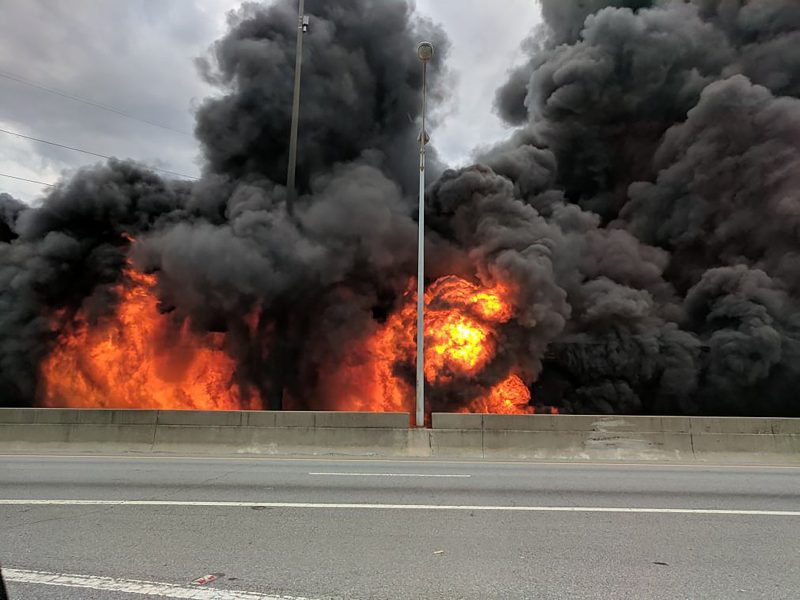A major question hovered in the hours after a fire caused Thursday’s collapse of a section of Interstate 85 in Atlanta: What caused the flames?
Three people were arrested Friday night in connection with the blaze, authorities said. Investigators believe one of the suspects started the fire intentionally, said Jay Florence, the state’s deputy insurance and safety fire commissioner.
Florence didn’t say how investigators came to suspect the man or say anything about a motive. Neither did he say exactly how the fire was set.
Here’s what we know about what led to the fire:
Started in a construction-supplies storage area
The flames ignited in a fenced-in, state-owned storage lot under the highway where the state stores construction materials and supplies near the overpass, state Department of Transportation Commissioner Russell McMurry said.
Specifically stored there, McMurry said, were HDPE — high-density polyethylene — pipes. He said the conduits are used in the “traffic management, cabling, fiber-optic and wire network.”
HDPE pipes are widely used in the transportation industry to build “smart” highways that provide information to drivers, control traffic signal lights and tollways.
The material had been stored there “for some time, probably since 2006 or (2007),” McMurry said.
The flammability of HDPE is relatively low, Tony Radoszewski, president of the Plastics Pipe Institute, a trade group based in Irving, Texas, told CNN. If HDPE materials burn, they would have to be exposed to a high temperature flame for a considerable amount of time, he said.
“Somebody had to start a fire. It doesn’t combust by itself, it needs fuel,” Radoszewski told CNN. “Someone had to do it. It’s not like someone would have dropped a match and it started.”
In addition to the city’s firefighting resources, two fire trucks from Hartsfield-Jackson Atlanta International Airport south of the city rushed to the scene and sprayed foam on the fallen section of roadway and the flames.
Why did the fire ruin the overpass?
Most structural materials lose strength when subjected to high temperature, so the concrete could have been compromised by the heat, said Reginald DesRoches, a professor at Georgia Tech.
Repairs “certainly can take anywhere from several weeks to several months,” he said. “The surrounding sections of the highway will be evaluated to determine if any damage was sustained from the heat. It is probably prudent to check both sides of the adjacent sections (northbound and southbound).”
Indeed, it will take “at least several months” to rebuild the collapsed and otherwise damaged portions of I-85, state officials announced.
Three sections of northbound I-85 — including the part that collapsed — and three sections of southbound I-85 will have to be replaced, McMurry told reporters Friday. That’s 350 feet of highway — nearly a football field — in each direction, he said.
